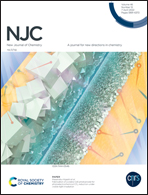Hierarchical porous carbon derived from coal tar pitch by one step carbonization and activation combined with a CaO template for supercapacitors†
Abstract
Hierarchical porous carbon materials (HPC) derived from coal tar pitch are synthesized through a one-step carbonization and activation method using CaO as the hard template. The influence of activator dosage, activation time and temperature on the morphology, pore structure and supercapacitor performances has been systematically researched. The synthesized carbon materials are characterized using scanning electron microscopy, transmission electron microscopy, Raman spectroscopy, X-ray diffraction, the Brunauer–Emmett–Teller method and X-ray photoelectron spectroscopy. The as-prepared HPC samples consist of irregular dense carbon blocks. The optimal HPCs-0.5-600-2 possesses a large surface area (1388.62 m2 g−1) with a hierarchical pore structure and moderate heteroatom content. The HPCs-0.5-600-2 electrode manifested a high specific capacitance of 329 F g−1 at a current density of 1 A g−1 and a good rate capability (71.4% retention at 50 A g−1) in the three electrode system. The symmetric supercapacitor assembled with HPCs-0.5-700-2 electrodes delivers an energy density of 6.45 W h kg−1 and a power density of 483.7 W kg−1, and also shows a cycle life with a capacitance retention rate of 56.9% at 10 A g−1 after 4000 cycles.



 Please wait while we load your content...
Please wait while we load your content...